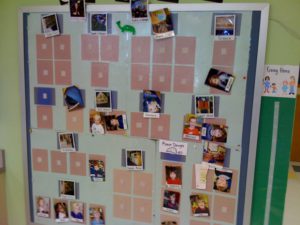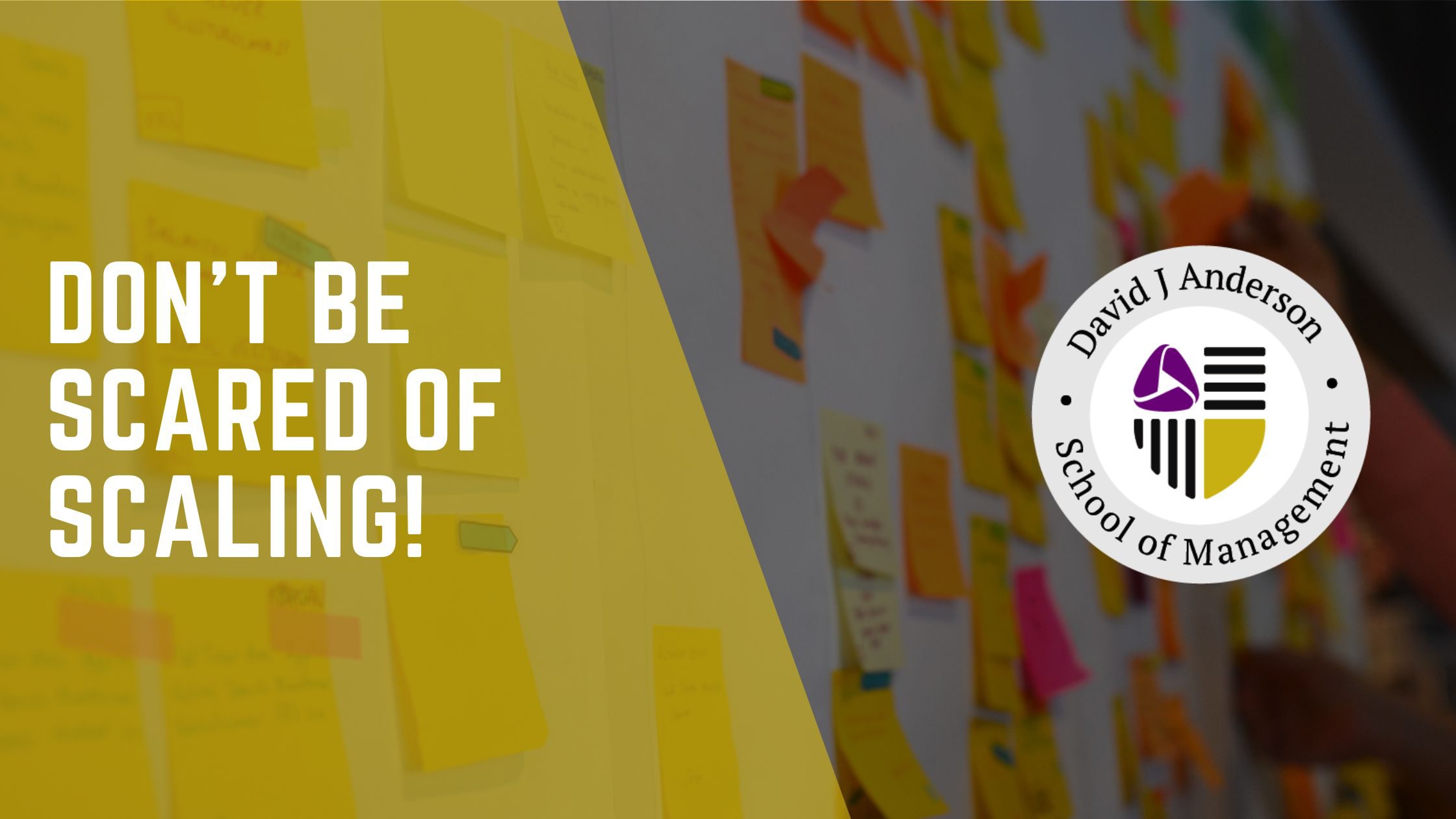Kanban for "free play"
David J Anderson 0 Comments
My younger daughter’s pre-school uses a kanban system. I’d been staring at it for months without realizing it was a kanban system and after I did I was troubled by the fact that it wasn’t a pull system. So I had to think about it a bit.

First an explanation
The board is laid out into a series of sections with slots in purple for a station (or type) and a fixed number of slots in red for children. The concept is simple. Different types of activities have different limits on the ideal number of children should participate. There are many more activities possible than available on any one day. So the teacher wants to be able to assign activities to slots on the board – and then physically lay out the activity within the room – for example the train table or the doll house. The children (typically 3 to 5 years of age) are empowered with “Free Choice” and can choose the activity they want to participate in. They are also free to move from one activity to another. The cards with their picture are kept in an index card case. When arriving at school at 9am they take their picture out of the case and decide which activity they’d like to start with. They stick their picture into an open red slot using a velcro fastener. If there is no open slot free on the activity they want, they have to choose something else. When they decide to change activities they return to the board and move their picture to the new activity and place it in an open slot. At any time, they can walk past the board to see if a slot has become free. At the end of the day, they move their pictures to the Going Home buffer off the board, and later the teacher returns the photos to the index card box.
It’s not a pull system
While this is clearly a kanban system, as it both limits WIP and uses cards to signal availability, it is not a pull system. This troubled me until I realized that goal is not flow. There is no concept of flowing children from one activity to another and no need for each child to visit each station. There is no flow, so there is no need for pull.
So why limit WIP?
Limiting WIP introduces a rule (or constraint) and the system to enforce and enable it, the kanban system, introduces concepts that 3 year olds have to learn. It introduces some overhead for them to enjoy pre-school. So why do it? Well the rules of kanban enhance collaboration amongst the children. The experience of playing at any one station is enhanced because only the appropriate number of children are at any one station at a time. No station is ever over-crowded.
The kanban system also empowers the children to have “Free Choice” even though they are only 3 or 4 years old. The rules of their kanban system mean that the teacher does not need to manage the number of children at each station, free’ing the manager (err, teacher) to do other things, and the rules insure a collaborative environment and avoid disputes, negotiation, arbitration and reconciliation that would be needed otherwise. The kanban system enhances the experience for the children, shows them greater respect as individuals, empowers them, while giving back the teacher more time to perform value-added activities rather than waste time resolving disputes over resources.
Kanban embraces and enables the People half of the Toyota Way
For me this example truly highlights how kanban embraces and enables the softer people aspects of the Toyota Way and Lean. Kanban respects people by empowering them and free’ing them from managerial supervision. It respects managers by giving them more time to perform value-added activities in this case child development. And kanban systems enable teamwork and collaboration by putting rules and constraints around what is acceptable behavior.
Recently Alistair Cockburn tweeted that Kanban with WIP limits was for Kindergarteners while Kanban without WIP limits was for adults! I’ll blog more about that thought another time. Meanwhile, isn’t it interesting just how much we can learn from kindergarteners and what they can teach us about empowerment and collaboration in the workplace?




